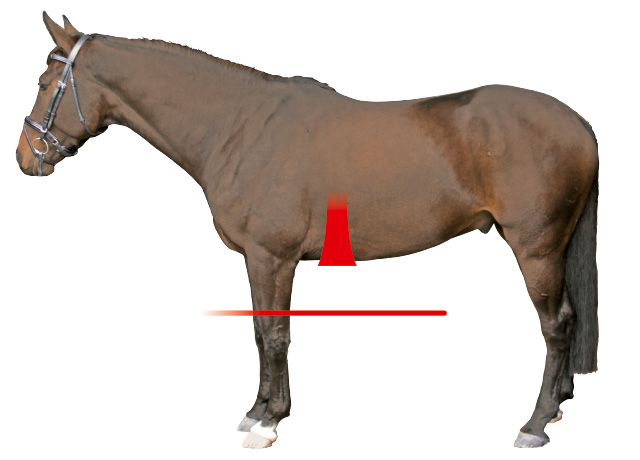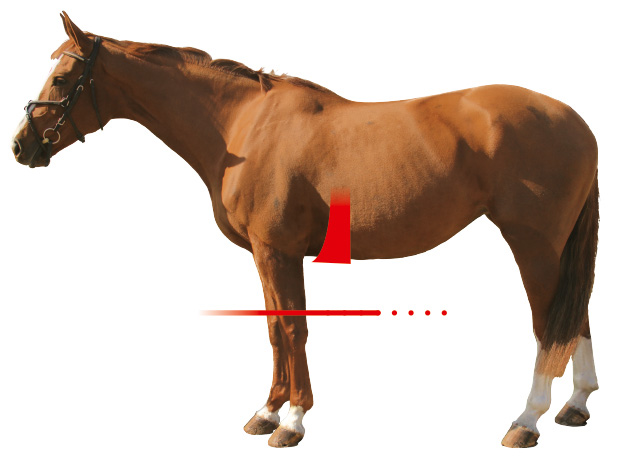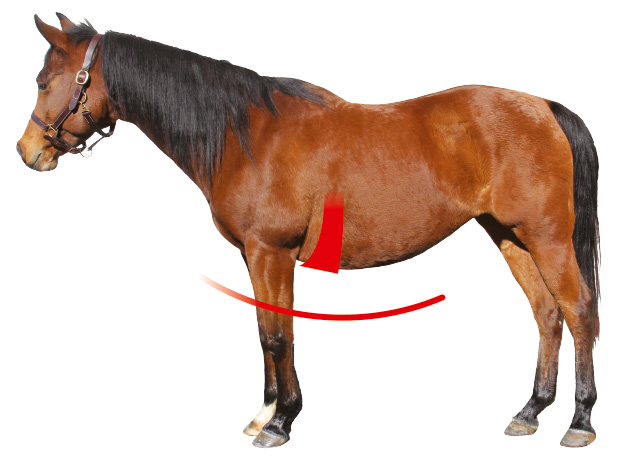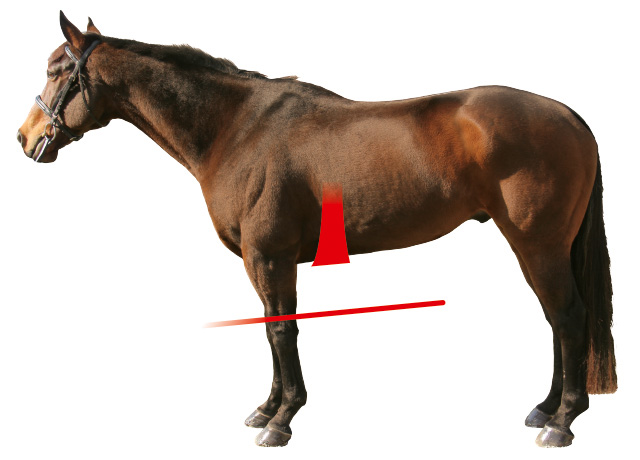Girths
Girth shapes and how to measure correctly.
Which girth does my horse need?
To prevent chafing and rubbing, we have developed the special MATTES girth range. Integral inserts and supports ensure even pressure distribution and prevent the girth from rolling inwards or creasing. The contoured shape provides freedom for the elbows to move without compromising on stability. It is also important to consider the anatomy of your horse.
Short and Long Girths
Download instructions (PDF, 850 KB)


anatomical
For horses with a well-defined girth groove, far enough away from the elbow. The girth is contoured a little at the front and back around the elbow area. (Girth is reversible)


asymmetric
For horses whose girth groove is closer to the elbows or less well-defined, where the girth tends to sit further forward. The girth is significantly contoured at the front around the elbow area.


crescent
For “round” horses with a short back and broad ribcage or narrow chest. The special shape of this girth works with the shape of the ribs so that the girth cannot slip forwards.


athletico
For horses with an athletic, wedge-shaped physique. The design of the girth prevents the saddle and girth from sliding back in almost all cases.

Measuring (for short girth)
Always measure girth length on a saddled and girthed horse. Both sides of the girth must be buckled evenly.
Measure from the lower edge of the saddle flap on one side to the same point on the other side, then subtract 30 cm. Always round up to the next length.
Example:
Measurement: 101 cm
Subtract: 30 cm = 71 cm
Girth length: 75 cm
NB:
Ensure that the buckles of the new girth are well away from the elbow to allow free movement!
Western Girths
Download instructions (PDF, 791 KB)


anatomical
For horses with a well-defined girth groove, far enough away from the elbow. The girth is contoured a little at the front and back around the elbow area. (Girth is reversible)


asymmetric
For horses whose girth groove is closer to the elbows or less well-defined, where the girth tends to sit further forward. The girth is significantly contoured at the front around the elbow area.


crescent
For “round” horses with a short back and broad ribcage or narrow chest. The special shape of this girth works with the shape of the ribs so that the girth cannot slip forwards.


athletico
For horses with an athletic, wedge-shaped physique. The design of the girth prevents the saddle and girth from sliding back in almost all cases.

Measuring
Always measure girth length on a saddled and girthed horse. Both sides of the girth must be buckled evenly.
Measure from the lower edge of the rigging ring to the same point on the other side, then subtract 30 cm. Always round up to the next length.
Example:
Measurement: 101 cm
Subtract: 30 cm = 71 cm
Girth length: 75 cm
NB:
Ensure that the buckles of the new girth are well away from the elbow to allow free movement!

 Deutsch (EUR)
Deutsch (EUR) Deutsch (CHF)
Deutsch (CHF)